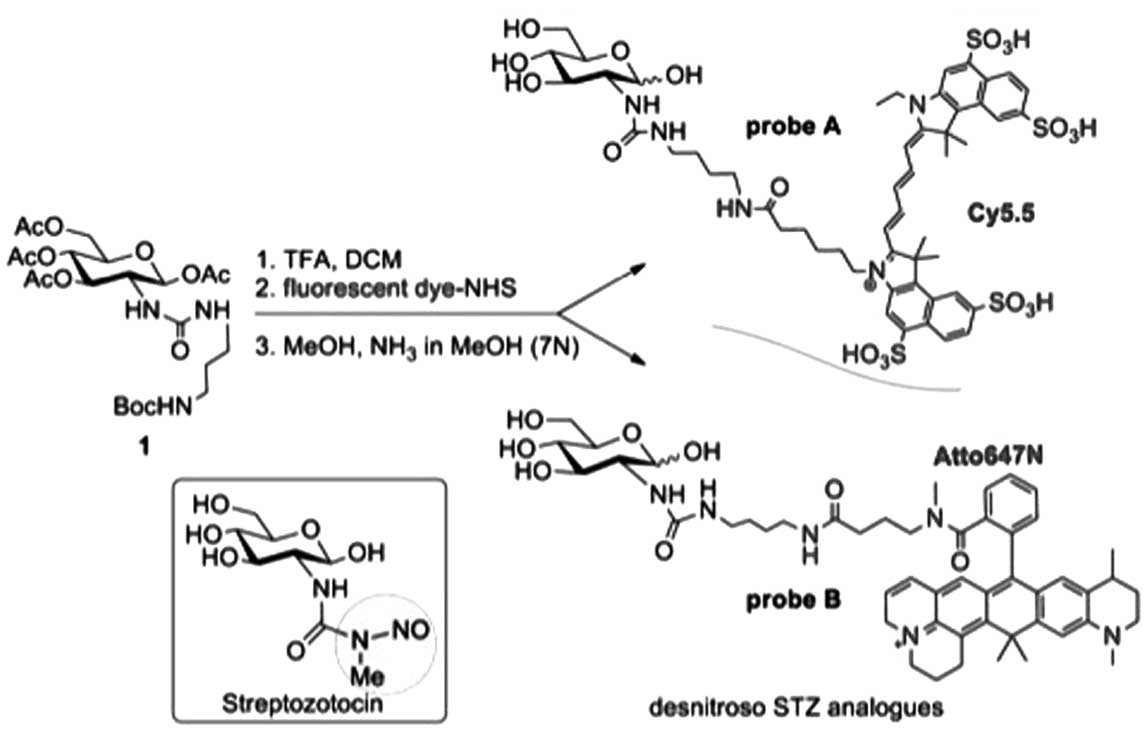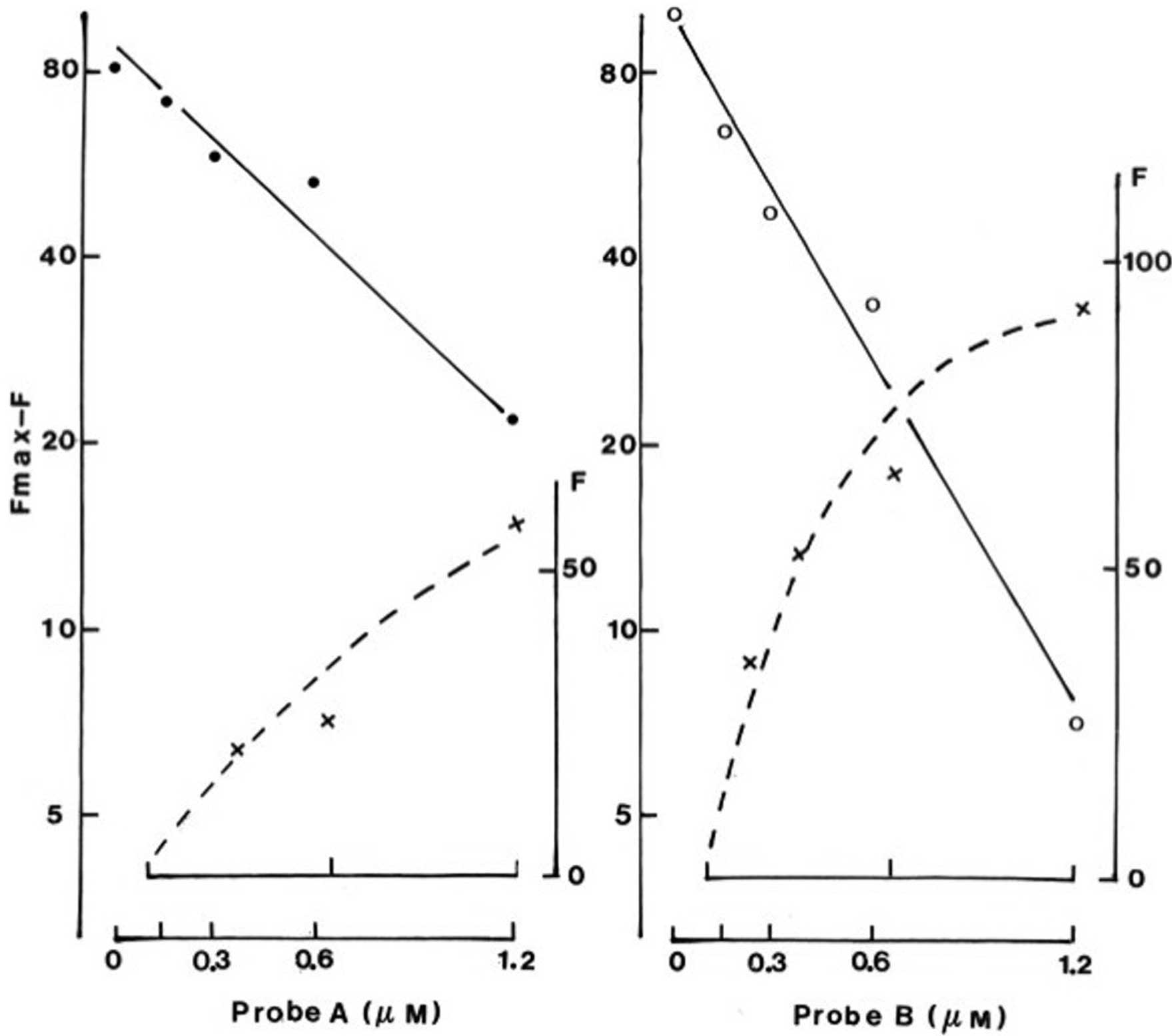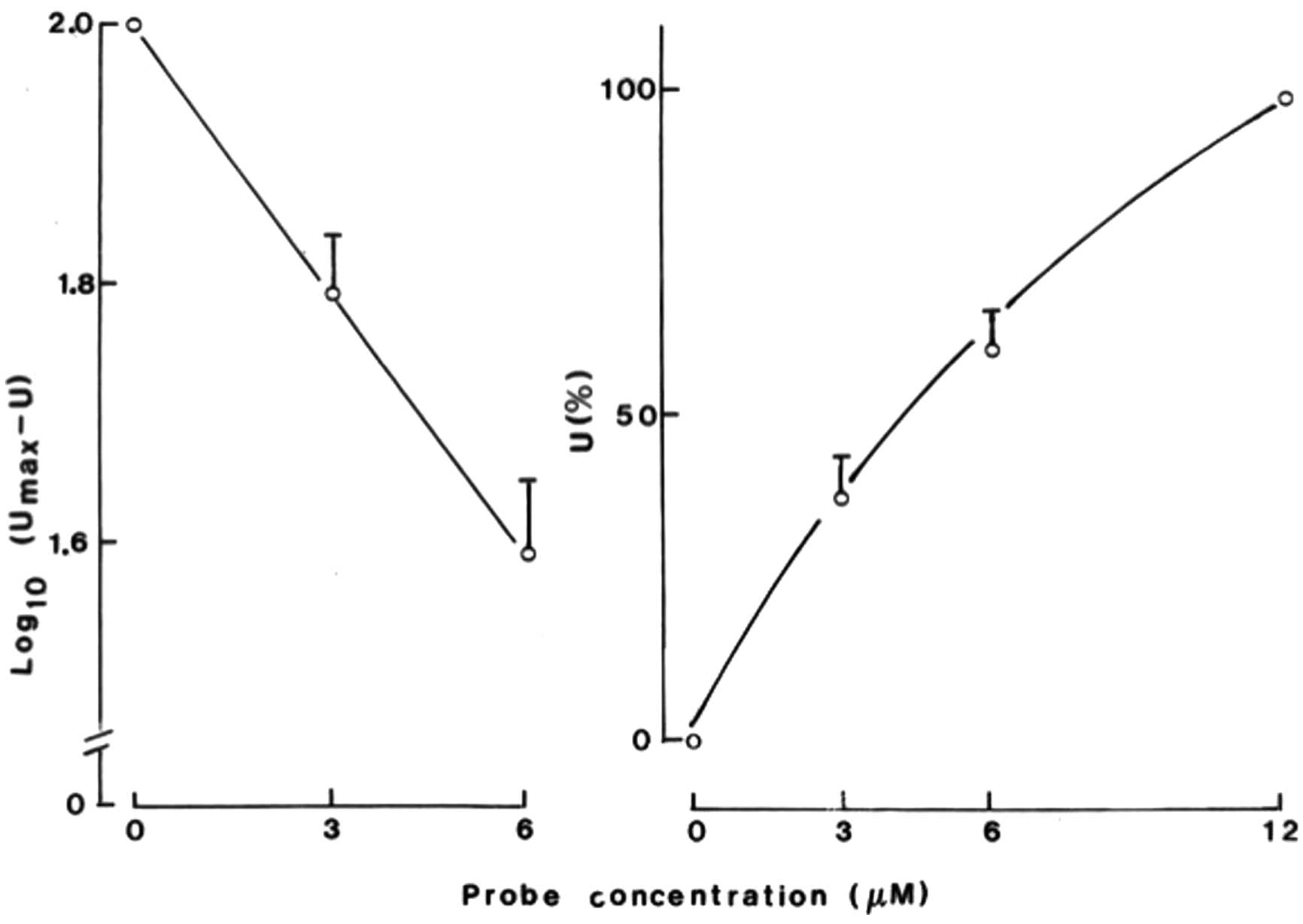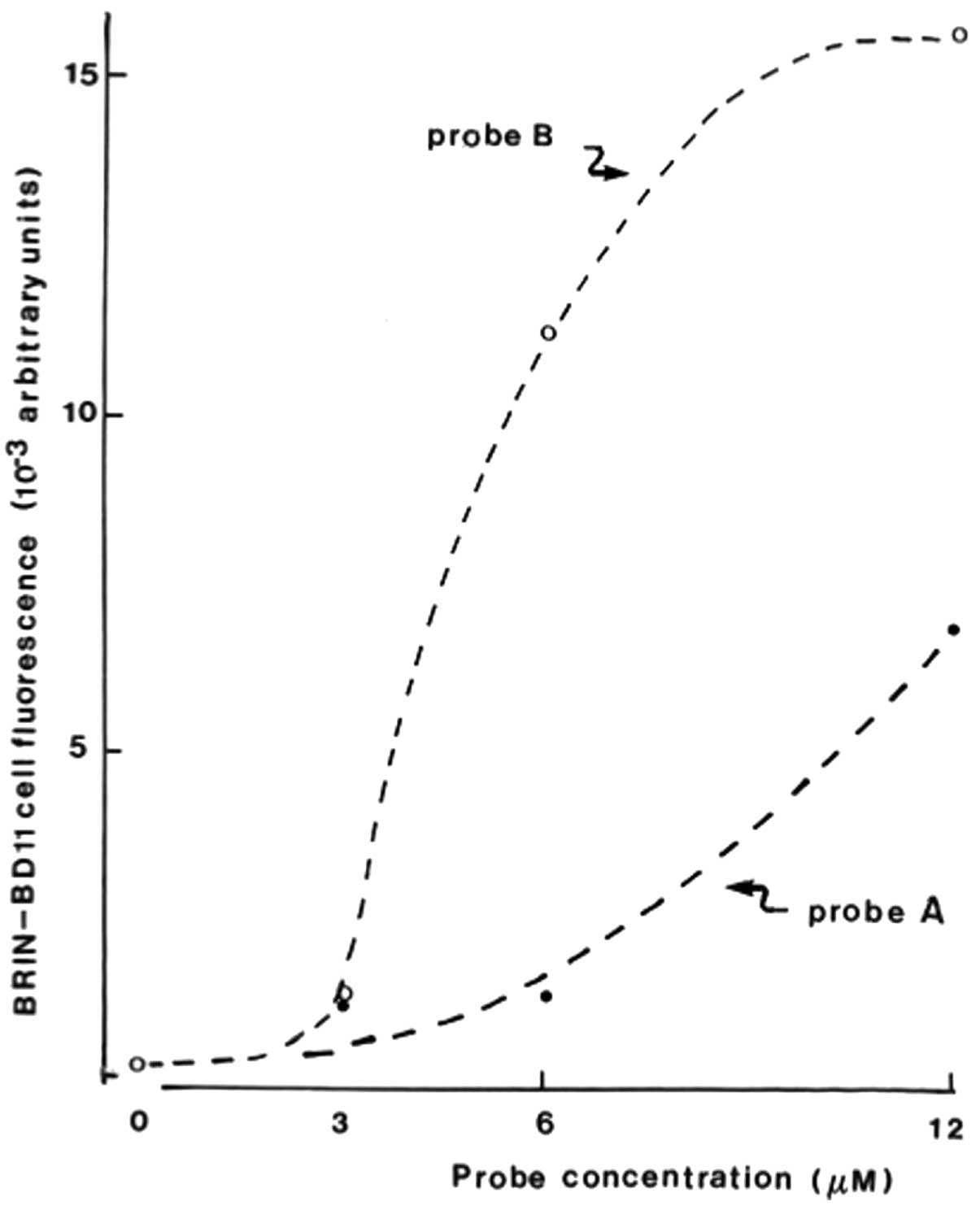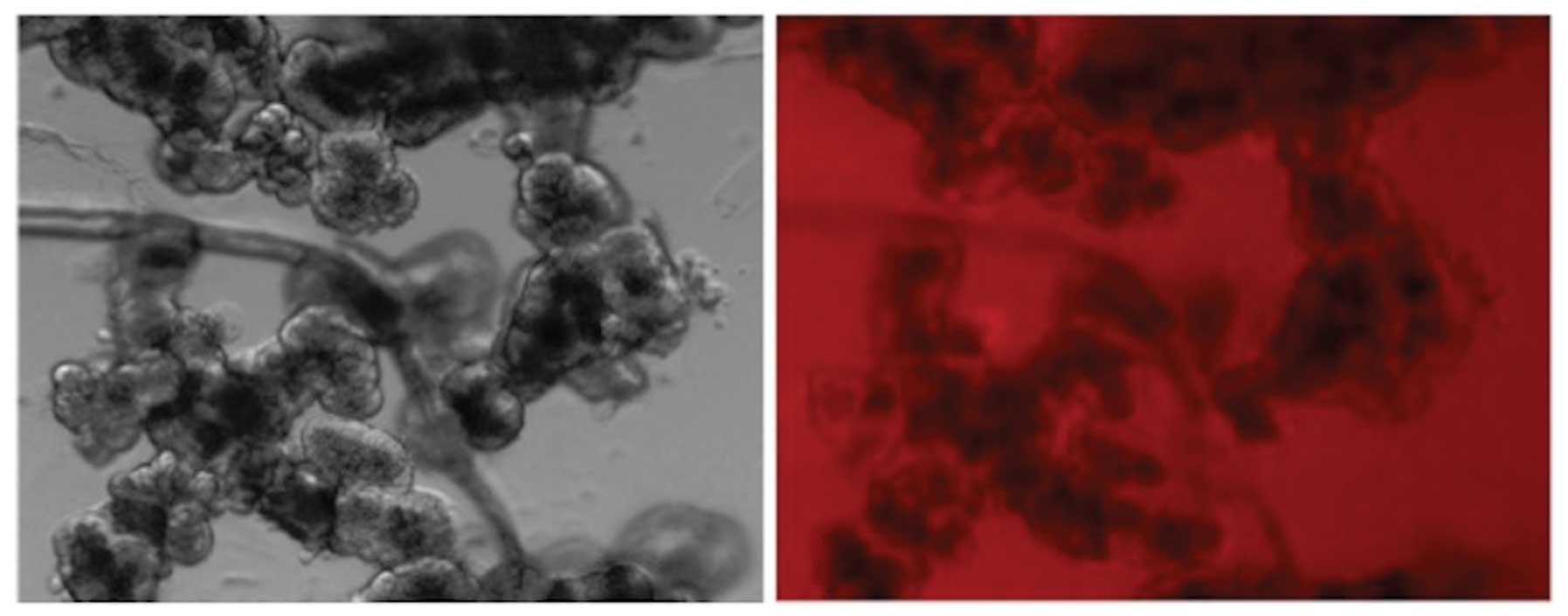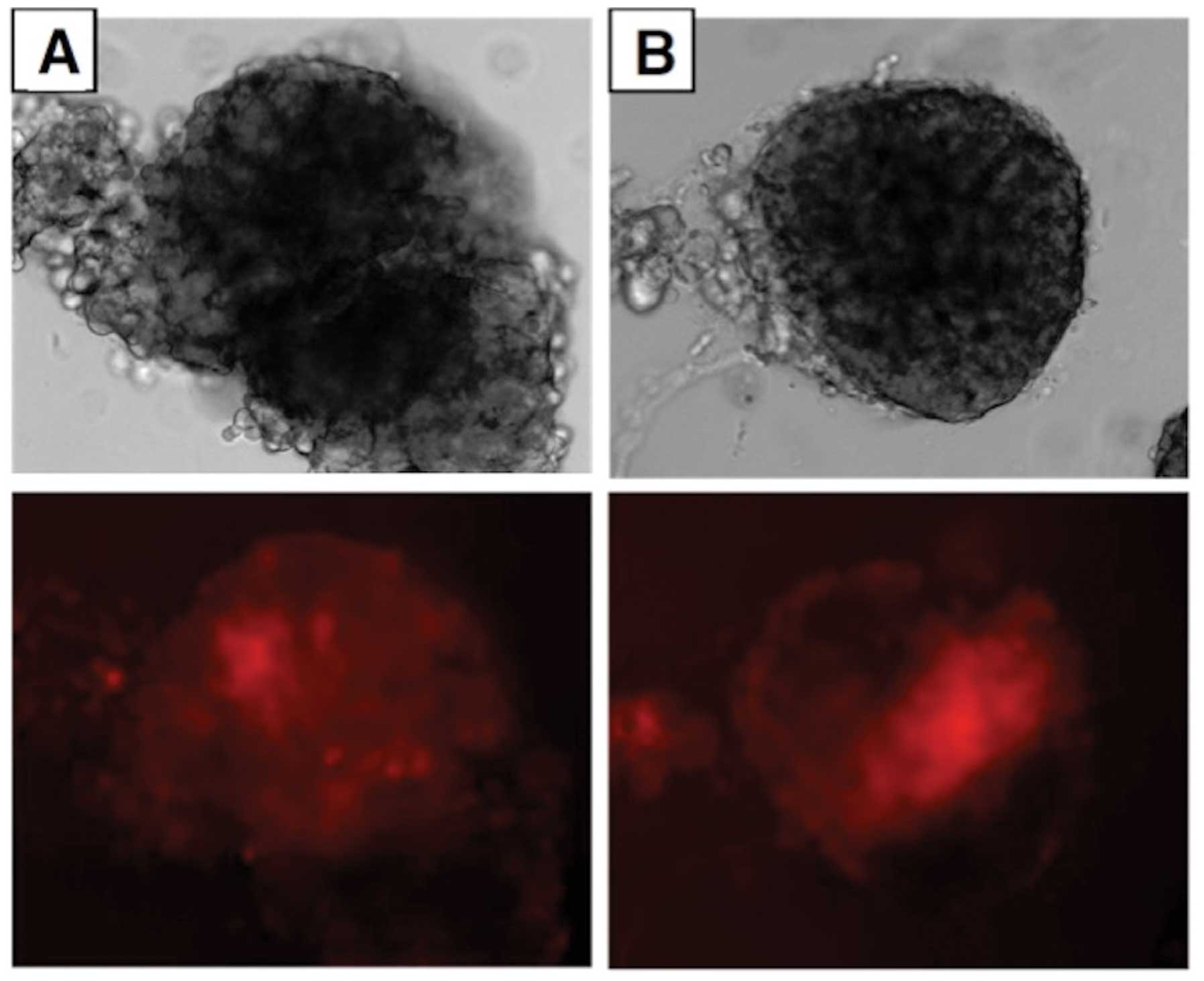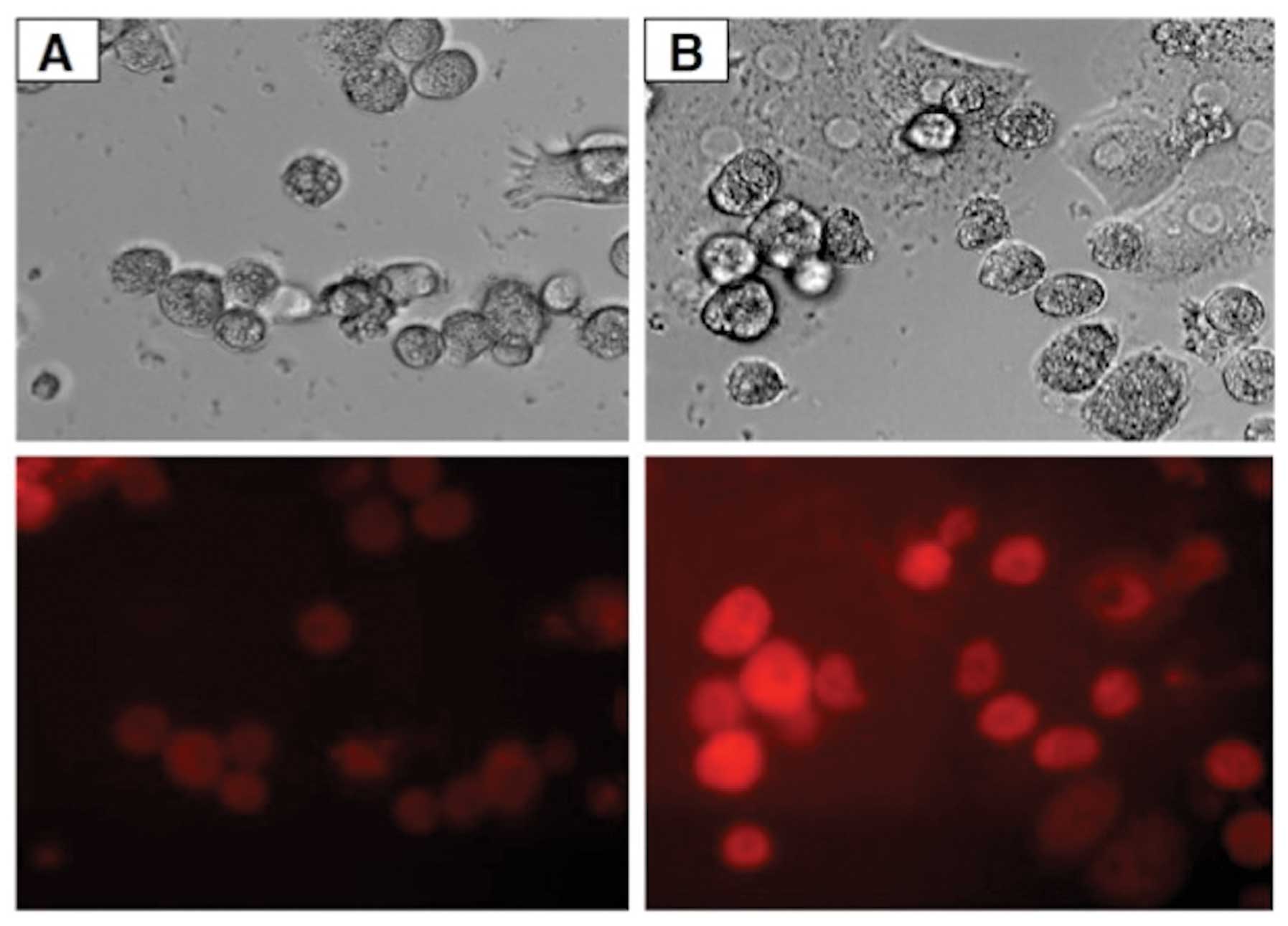Immunocytochemistry of GLUT2, uptake of fluorescent desnitroso-streptozotocin analogs and phosphorylation of D-glucose in INS-1E cells
- Authors:
- Published online on: June 27, 2013 https://doi.org/10.3892/mmr.2013.1559
- Pages: 473-479
Metrics: Total
Views: 0 (Spandidos Publications: | PMC Statistics: )
Total PDF Downloads: 0 (Spandidos Publications: | PMC Statistics: )
Abstract
The non-invasive imaging of GLUT2-expressing cells remains a challenge. As streptozotocin, and similarly alloxan, may be transported into cells by GLUT2, the major aim of the present study was to assess the possible use of fluorescent desnitroso-streptozotocin analogs for in vitro labeling of GLUT2-expressing cells. INS-1E cells, human embryonic kidney (HEK) cells, rat isolated pancreatic islets, rat hepatic cells, rat exocrine pancreatic cells and tumoral insulin-producing BRIN-BD11 cells were incubated in the presence of two distinct fluorescent desnitroso-streptozotocin analogs, probes A and B. The immunocytochemistry of GLUT2 in INS-1E cells and the phosphorylation of D-glucose by INS-1E cell homogenates were also examined. The uptake of probes A and B (12.0 µM) by INS-1E cells yielded apparent intracellular concentrations approximately one order of magnitude higher than the extracellular concentration. The two probes differed from one another by the absolute values for their respective uptake and time course, but not so by the pattern of their concentration dependency. Comparable results were recorded in HEK cells, rat isolated pancreatic islets and hepatocytes. Vastly different findings were recorded, however, in rat exocrine pancreatic cells, which do not express GLUT2. Moreover, an unusual concentration dependency for the uptake of each probe was observed in tumoral BRIN-BD11 cells. It is proposed that suitable fluorescent desnitroso-streptozotocin analogs may be used to label GLUT2-expressing cells.



